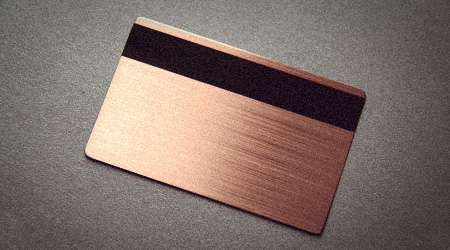Why Do Magnetic Stripes Stop Working?

A number of different types of cards nowadays use magnetic strips to convey information, provide access and conduct purchases. Examples of various cards include credit cards, debit cards, library cards, ATM cards, security cards and drivers licenses. It is a highly reliable and time-tested means of facilitating transactions and verifying identity. Periodically however, the magnetic stripe on the back of these cards will fail and stop working altogether.
About Magnetic Stripes
The first magnetic stripe cards were created in the 1960s when an engineer at IBM found a way to combine magnetic tape with a plastic card substrate. Magnetic tape was commonly used in mainframe computers for data backup so it was readily available and fairly inexpensive. Since the procedure of storing data on magnetic tape was well-established, this was an ideal way to store a limited amount of information in an easy to carry form factor for consumers.
About the same time, automated teller machines were being more widely used and accepted by consumers and credit cards were becoming a standard form of payment for retailers. As a result, ATM cards and credit cards became more popular and were being consistently used in day-to-day life. The magnetic stripe is encoded with relevant pieces of information depending on the cards use but over time different issues can lead to failure.
Reason For Failure
For individuals or consumers who use their cards every day, sometimes it's just a matter of the magnetic stripe wearing out. Wear and tear from the swiping motion can lead to scuff marks and wear down the magnetic stripe to the point where the encoded information is no longer readable. This is why a sales representative is sometimes able to type in credit card information manually and process the transaction instead of continually swiping it in failure.
It is important to keep in mind the key characteristic of this technology which include the words "magnetic stripe". The magnetic strip of material on the back of the card contains small particles encoded with numeric information which is then readable at card terminals. If however this magnetic information gets wiped or rearranged due to a strong magnetic source then the information will become corrupted or deleted altogether.
The final problem has to do with temperature extremes which don't necessarily affect the magnetic particles or card quality but the underlying materials. The flexible magnetic tape and plastic card, while durable, are not indestructible. Exposure to sources of extreme heat or cold, such as being left in the car during winter or direct sunlight in summer, can warp and degrade a card to the point where it looks fine but is no longer functional.
What Can You Do?
Credit card companies, financial institutions and other organizations are used to card failure and have access to large quantities of blank cards when necessary. Lost, stolen or damaged credit cards and other types of cards are a common occurrence and only require a phone call to get a replacement. The best thing to do however, is to take care of your card by keeping it in a protective sleeve and a wallet or purse. Avoid extreme weather exposure or unnecessary wear and tear and your card should last for many years.
Elsewhere on StockMonkeys.com







